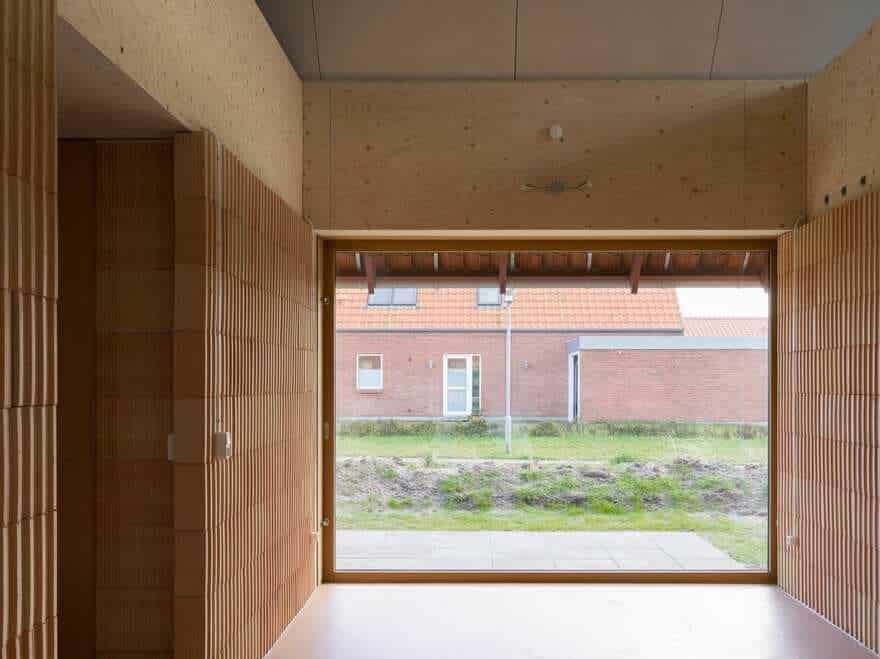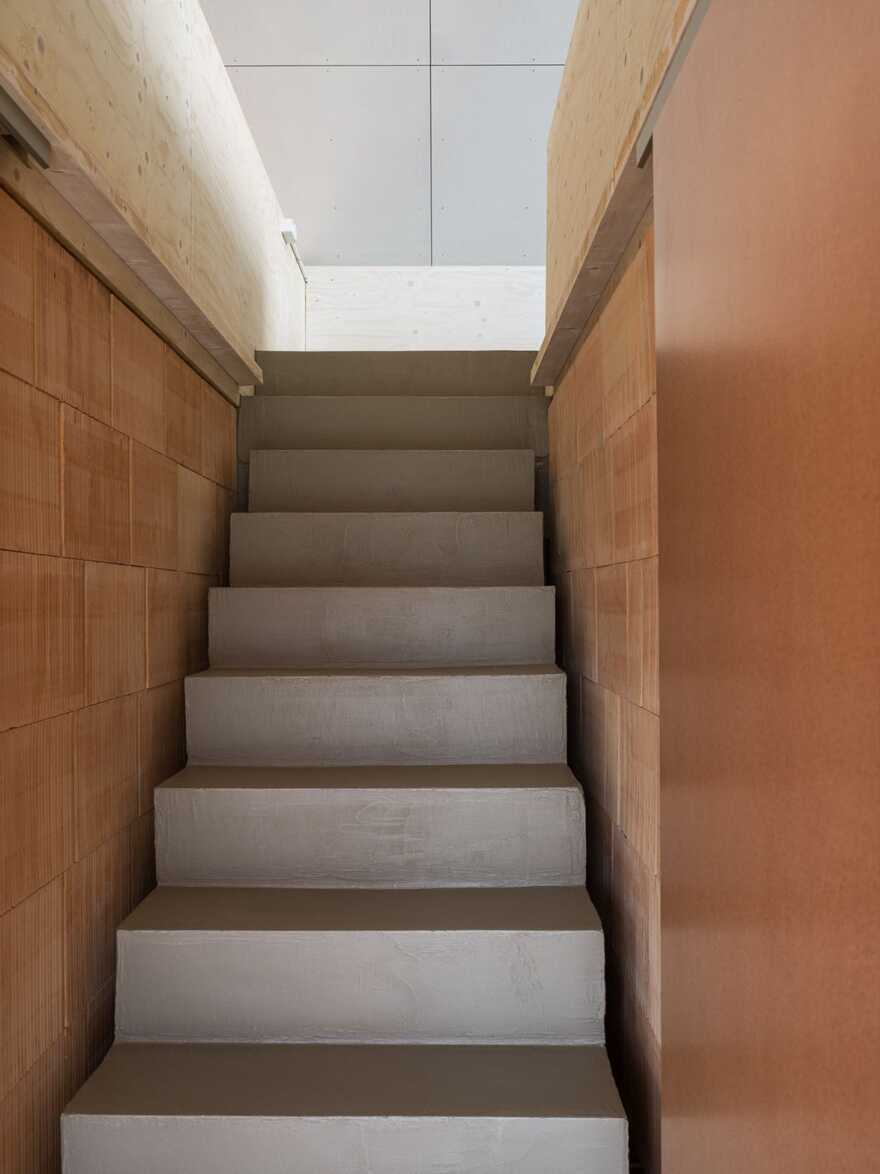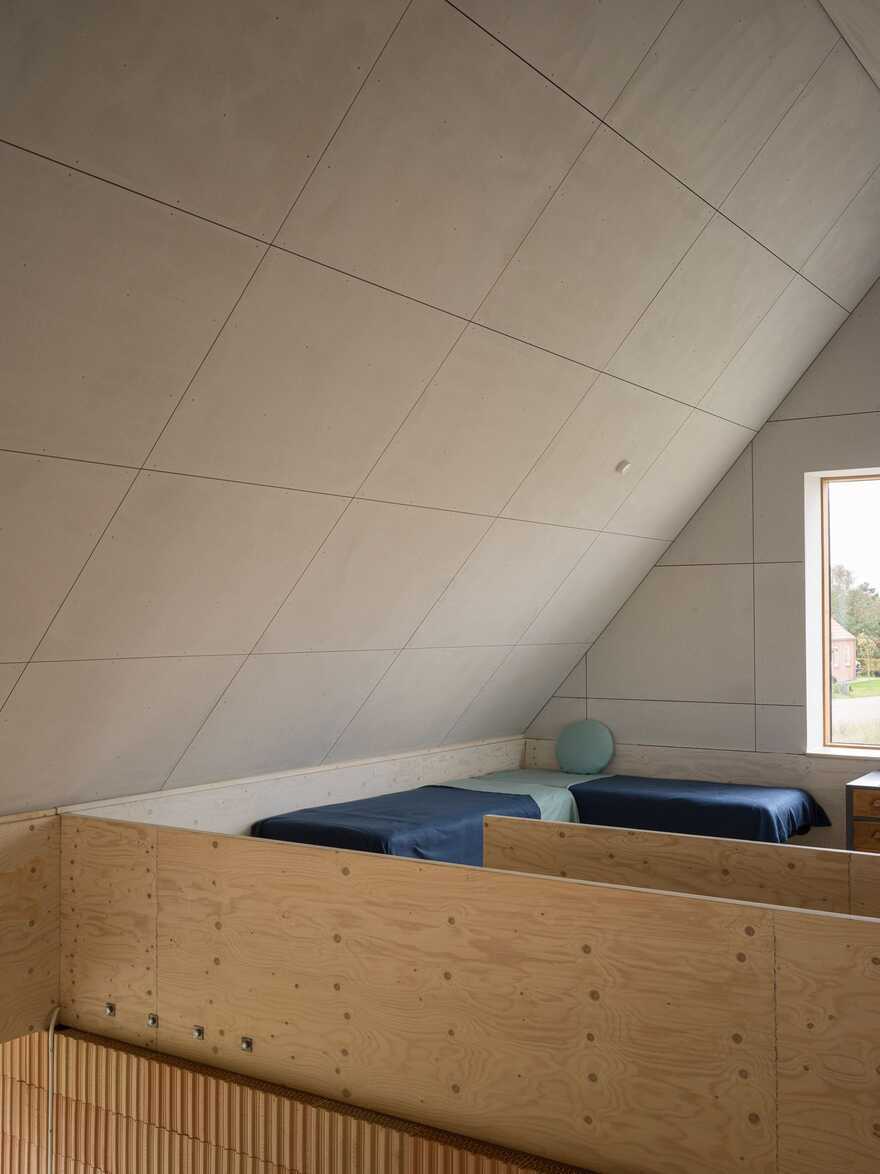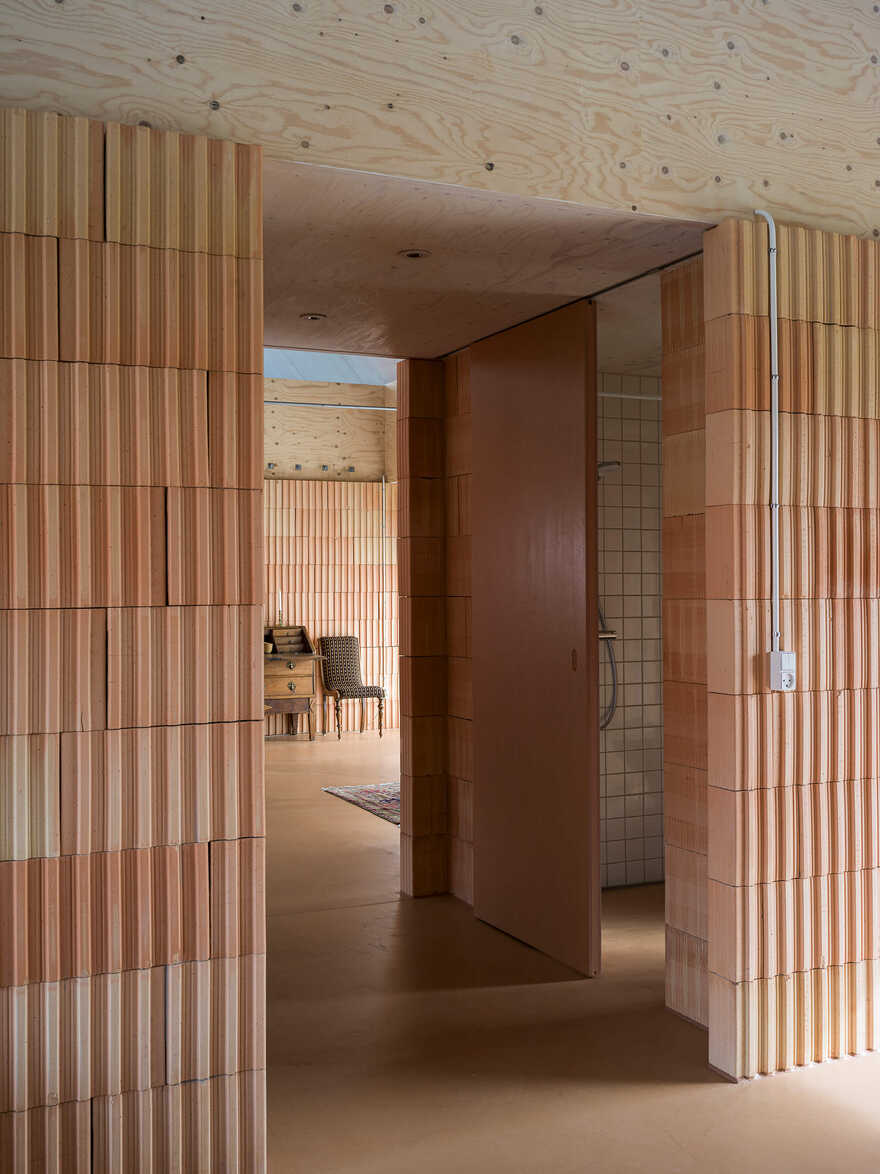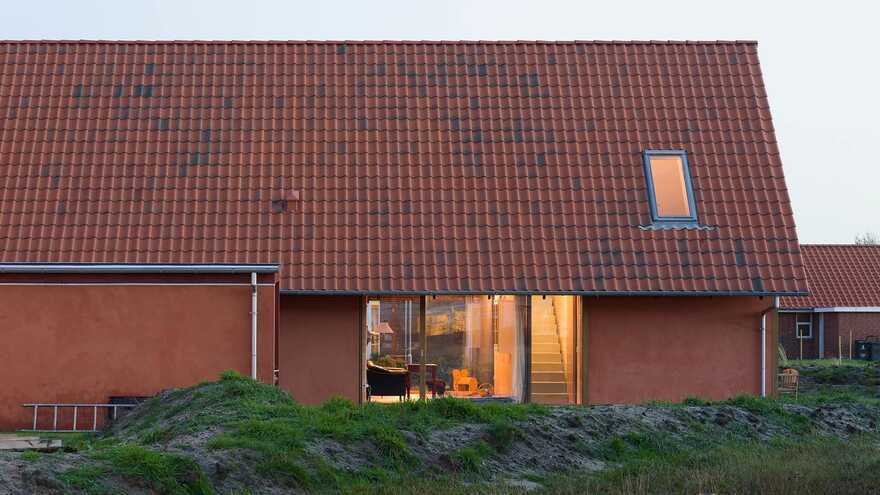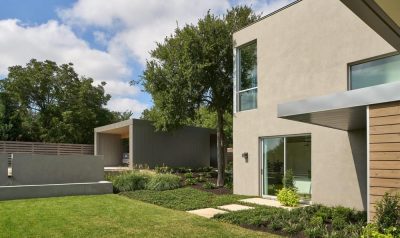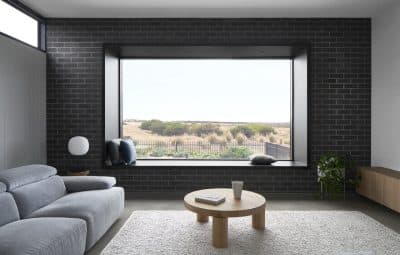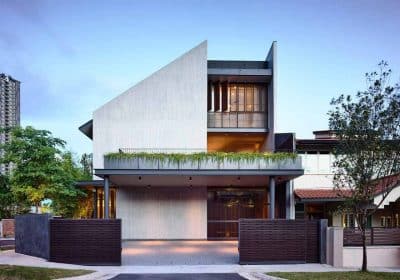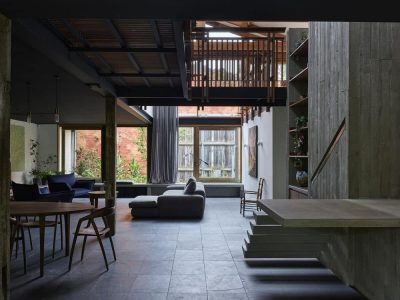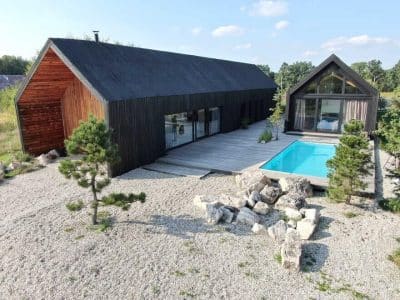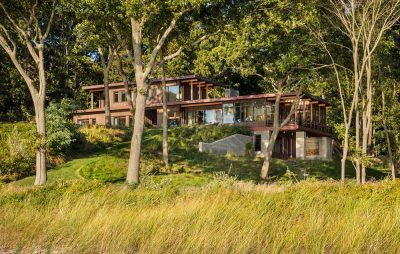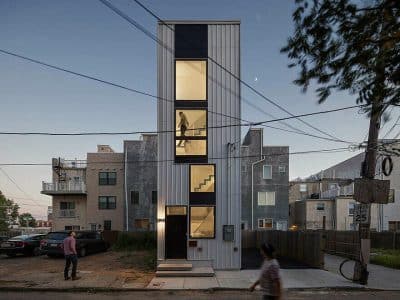Project: Modern Danish Longhouse
Architects: Lenschow & Pihlmann
Location: Nordby, Fanø, Denmark
Area: 198 sqm
Year 2020
Photo Credit: Hampus Berndtson
This Modern Danish Longhouse has been the inspiration for a new single-family house on Fanø an Island in the Wadden Sea. The typology is characterised by its elongated shape where the barn and habitation were traditionally placed under a continuous roof.
To protect against the harsh west winds of the island, they are oriented from east to west. They are simple and robust in their detailing and clear in their use and application of materials. The house can be seen as a new interpretation of the traditional long house typology.
The intent of the Fanø’s longhouse is to form a strong relationship with the local context and facilitate the everyday patterns of life within a rich and varied plan. Legibility of typeform is apparent from the scale of the house to the scale of the door handle. Throughout robust, inexpensive materials form a strong, expressive narrative. Each constituent part is exposed and elevated through careful arrangement to make a coherent whole.
Its outer appearance is characterized by a steep pitched roof clad in profiled clay tiles and warm terracotta tone render. Each layer of its composition is revealed and painted to emphasise the composite nature of the construction. Large format oak glazing profiles are placed close to the façade.
A deep overhang creates a sheltered space allowing circulation beneath the eaves. Thresholds to the exterior vary in scale depending on aspect. Parts of the house are protected from the strong prevailing winds by a sand and soil dune planted with small pines, marram grass, heather and crowberry.
The spatial layout is arranged around three volumes separated by partitions which stabilize the construction and enclose stairs allowing movement to the upper mezzanine level which houses an office and additional sleeping space.
Fixed elements, such as the bathrooms, bedrooms and utility rooms are located within each of the volumes. One of the house’s two living rooms can be used as a conservatory during the summer, an uninsulated ‘external’ space within the plan. The conservatory divides the house into two private parts when guests visit. The plan is flexible allowing different types of accommodation and use according to the season and everyday patterns of life.
The interior is unified by the single symmetrical pitch of the roof. A deep edge and cross bracing beam in laminate veneer lumber defines the perimeter of each room. Structural element, frieze and balustrade it lifts the roof above from the masonry.
Below the line of the beam insulating clay blocks separate the space. The blocks are profiled and pale terracotta in colour, joints are narrow giving the walls a delicate, monolithic quality. Power, conduits and controls are made visible. Lighting is suspended or wall mounted. Large sliding doors in coloured mdf close the bathroom and bedroom from view.
Each architectural element is legible and expressive. Laminate veneer lumber, coarse render, insulating clay blocks, coloured mdf, fibre gypsum board, powder coated steel, soaped spruce plywood and a sand coloured cement screed give the interior a colourful, material quality. Fitted furniture is light and robust. Placed adjacent to the façade, the kitchen consists of two components, a fixed framed element containing the stove and sink painted in iron oxide red with a steel plate work surface. Moveable cabinets in plate steel rest beneath allowing the arrangement to be reconfigured.




